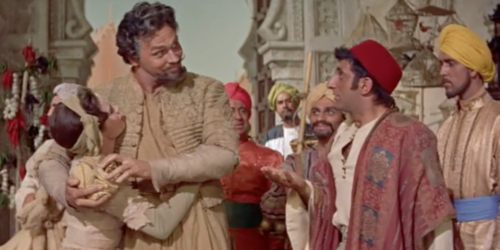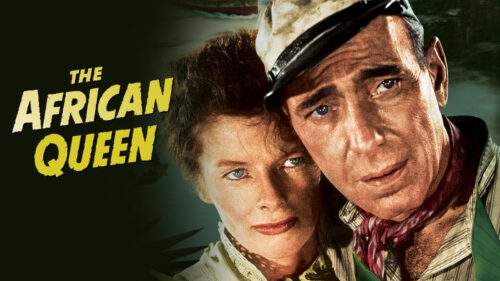
View on the web
In this issue: Proof copies, Kismet, a possum report, The Night Circus, a romance (plus one) for February.
Proof copies
One of the crazy things about publishing is you get a choice, albeit a small one, of where to print your books. I requested proof copies from both Ingram (which feeds bookshops) and Amazon to check the quality.

I’m very pleased with both, but proof copies give me a chance to check things. Like here, the gutter (the part of the page near the middle) is too small, so you have to open the book wide to read it. I’ll be adjusting the margins to be smaller on the outside, bigger on the inside.
The Night Circus
This novel by Erin Morgenstern was my read for this fortnight. Written in 2011, and winning prizes for fantasy fiction, the tale is about the people involved in an unusual circus that is only open at night. There are few acrobats and no elephants. Each tent offers guests a different experience.

I’m glad I didn’t know it was a fantasy before I started it; I read it like literary fiction, because the prose was so evocative. It was like total immersion into a different kind of circus–black and white instead of flashy colors, real magic instead of tacky illusions, and a bizarre and varied circuit of appearances. From the clockmaker to the fortune teller, the characters are deeper and less stereotypical than I expected, with their own talents and desires.
Some suspense was created by having two of the characters, unbeknownst to themselves, set into a competitive game by a surreptitious authority. It’s a competition that won’t end until one of them is killed, presumably by the other or as a result of competing magic. Yet the word “magic” is rarely used in the book; such powers are accepted as belonging to certain people, and their use is to delight rather than harm. An excellent read, more steampunk than fantasy.
Possum report
I name the possums that come into our backyard, of course. When a large gray one appeared, I named him Cassius because he was always hungry (see Shakespeare on this). But once his belly dragged on the ground and I saw multiple tiny tails, I realized he was a she, so she’s Cassie. Two of her kits have stayed in the yard. One is bold and the other shy, but they look alike so I’m not sure which one this is on the left:

It’s Cassie having some water on the right. So this means all the possums in the yard right now are female (they have the pointier faces). Last night, I heard one clicking in the night. That’s the sound adults make to let their kits know where they are, so there may be more out there than I think!
Film review: Kismet
While my days aren’t ruled by what’s on Turner Classic Movies, I do find gems there that are worth giving up an evening of writing. Kismet is one of those gems.
Yes, it’s a 1955 musical, so you get the high-waisted costumes and hair sprayed within an inch of its life. There are songs and dances that only tangentially play into the story, and many poorly disguised sexual entendres are broadly delivered. But it has two aspects that make it quite special.
The first is the source of the story. Hajj the Beggar, his heights of wealth and power alternating with the depths of poverty, seems straight out of the Arabian Nights. Don’t expect any historical “accuracy” — Kismet is set in a “fictional Baghdad” from the tales, not an actual place. This gave the art directors (including Preston Ames, who also did An American in Paris) free reign to create fantasy sets and outrageous costumes.

Anne Blyth as Marsinah and Howard Keel as her father Hajj. And yes, that’s Jamie Farr in a small role as a marketplace merchant.
In addition, the basis of the story was a 1911 play by Edward Knoblock, with the role of Hajj seemingly written for Oscar Ashe, a Shakespearean actor/manager (not unlike my character Cyril Price in Murder at Old St. Thomas’s). On Broadway in 1953, Alfred Drake played the role, and Howard Keel plays him in the film–clearly, an expert who can ham it up is needed!
The second extraordinary thing is the source of the music. Although the lyrics/book were written by Charles Lederer and Luther Davis, the music is primarily adapted from work by Alexander Borodin, a 19th century Russian composer. Songs that became known, such as “Stranger in Paradise”, were based on his musical themes, which makes me smile whenever I hear Borodin on classical music radio. (An American in Paris did something similar, but with the music of George Gershwin, which was very different.)
BOGO at Kobo
In the mood for a bit of historical mystery romance? Kobo is offering a Buy One Get One special through February, and guess what’s on the list?

So you can get A Heart Purloined and another romance book together. Kobo is where I buy my e-books too!
And more!
- Want to read previous newsletters? They’re located here at my website, where you can also find information and buy links to all my books. You can post comments there too.
- Want to read my blog posts on history and writing? They’re on my Lisahistory blog.
Until next time, keep grousing!

View on the web
In this issue: Resuming the Victorian mysteries, The Assassination Bureau, Glass Onion, and the Bummer at Luna Beach cover reveal.
Missing the Victorian mysteries?
Me, too! But soon I will be back to writing Murder at the Gasworks, the prequel to the Tommy Jones mysteries. I’ve wondered myself how Tommy became the ward of Cuthbert Slaughter and his wife, so it’s time to get going.
The Victorian era has so much in common with today. Fascinated by the latest gadget? Worried about the environment? Frustrated that the government doesn’t implement the will of the people? Interested in gender issues? All of these were debated and written about extensively in 19th century England.
 City of London Gasworks, from Discoveries and Inventions of the Nineteenth Century by Robert Routledge, 1905.
This is why it’s so enjoyable to do the research. The reader must feel they are part of the era through historical detail, but the overall social setting already seems familiar. And I love technology, so the gasworks is a great subject. There were several gasworks serving London in the 1860s, all competing against each other (oh, yeah, that’s another familiar topic!). The one shown above was in the City of London, which is where much of my novel will take place.
The Assassination Bureau
I love old movies, as you know, but many of my favorites aren’t commonly known.
Take The Assassination Bureau. Oliver Reed and Diana Rigg are at their serious silly best. Based on an unfinished thriller by Jack London, it’s the story of Ivan Dragomiloff and his nemesis, Sonia Winter. She has discovered that Dragomiloff runs an organization that kills immoral reprobates for pay. She’s decided he’s one of those reprobates.

Set in 1908, Winter is a women’s rights activist, and gets funded by her employer to hire Dragomiloff to assassinate . . . himself. He’s not upset by this. In fact, he’s downright pleased at setting his minions to the task. It gives him an opportunity to purge his organization, because most members are killing for money rather than morality. A very fun film.
Glass Onion review
I like new movies too, or almost new, anyway — it’s 2002. I saw the first film in what is now obviously a series (“A Knives Out Mystery“, says the subtitle).

Glass Onion intrigued me with its title, since I know the Beatles song well. Turns out that’s the name of the actually glass feature in the billionaire’s home, and I was delighted they used so much music, including the song. Janelle Monáe is outstanding.
The beginning was great, because it was set up exactly like an Agatha Christie: a small group is invited to a billionaire’s isolated island retreat for a murder weekend. All the guests (except the detective) have had their careers advanced by the billionaire. What follows are murder, and twists and turns, just like you’d expect, set against a glorious production design I’d call Billionaire Modern.
It’s worth watching just for Janelle Monáe’s portrayal of Andi (Cassandra – don’t miss the classical reference!) Brand. The guest star cameos are fun, too, but unnecessary.
Daniel Craig again plays Detective Benoit Blanc, but I didn’t enjoy his interpretation of the character any more than in Knives Out. I just can’t figure out what he’s trying to do with the character. Any idea, just tell me in comments!
Cover reveal
Only for newsletter subscribers and visitors to my website, it’s the cover reveal for Bummer at Luna Beach, my upcoming cozy mystery.
 Release date is April 20, but I still have a spot for an early reviewer (just email me at lisa@grousablebooks.com). If you are on LibraryThing, I’ll be putting early reviewer copies there too for free in February. After that, the paperback and e-book will be available at all the usual booksellers, including my shop if you want it autographed. Release date is April 20, but I still have a spot for an early reviewer (just email me at lisa@grousablebooks.com). If you are on LibraryThing, I’ll be putting early reviewer copies there too for free in February. After that, the paperback and e-book will be available at all the usual booksellers, including my shop if you want it autographed.
And more!
- Want to read previous newsletters? They’re located here at my website, where you can also find information and buy links to all my books. You can post comments there too.
- Want to read my blog posts on history and writing? They’ve moved back to my Lisahistory blog, which I’m busy reorganizing. (Two blogs was just silly.)
Until next time, keep grousing!

View on the web
In this issue: more ARC reading opportunities, a fave Miss Marple, why we love mysteries with hubris, and ordering direct from an author.
ARC reading in the new year
I have expanded the team and have a few more ARC reader spots available for Bummer at Luna Beach, my first SoCal cozy mystery.
What are ARC readers? As I mentioned last time, ARC readers are keen book lovers who receive a free e-copy of a book before it’s published (an Advance Review Copy), then provide general feedback to the author (if they’re comfortable), then share their support of the book with friends, on social media, and anywhere else they can think of. And that’s it!
Bummer at Luna Beach begins with a dead body on the beach, covered in sand at the bottom of a sea bluff. There’s a real police detective on the case, but he’s new to the town of San Benno. In steps Rosie McMahon, 72-year-old maven, to assist. Like all my mysteries, it’s a story with appealing characters and a serious underlying theme. Definitely in the “cozy mystery” category.
For this book, I’ll be sending out an e-copy this month, and asking for some sharing by the beginning of March. Book release date (paperback and e-book) is April 20.
If this sounds good to you, email me at lisa@grousablebooks.com.
Miss Marple
Who’s your favorite TV/movie Miss Marple? Margaret Rutherford in the old films? Geraldine Ewan, Julia Mackenzie, or Joan Hickson on Masterpiece? How about Angela Lansbury in The Mirror Crack’d?
Although Agatha Christie’s female sleuth is sometimes thought of as a doddering old lady, most actors played her as more intelligent than the other characters. She is an older woman who is underestimated by those around her, often by her own design.
 Joan Hickson as Miss Marple
Each portrayal is different, but I’d go with Joan Hickson as the most unassuming and underestimated, a Miss Marple you would hardly notice, asking suspects ordinary questions and placing hints for the other characters when they are most needed. But one would have to go back and read the books again to decide who was most faithful to Christie’s character.
Why mysteries? Hubris!
The more chaotic our world is, the more we love our mysteries. In the best novels, the reader has the assurance that justice will prevail, an especially potent motif when it seems like this isn’t happening in the real world. For some, the thrill is the race between the reader and the sleuth to solve the puzzle.
I am not into puzzles, I’m not a game player, and I’m not fascinated by the criminal mind. Fairness and justice are my ingrained values, while hypocrisy and unallayed selfishness are anathema. Psychotic killers are of little interest to me, which is why I don’t write thrillers. Rather, like Arthur Conan Doyle, I write stories where intelligence prevails and the killer is caught.
 Originally printed in The Strand Magazine, October 1891, p. 401.
Why are they caught? Certainly because the sleuth is cleverer than they are, but also because of hubris. Translated loosely as “excessive pride”, hubris is a self-centeredness so profound that the character follows his own goals heedless of the pain they cause. They haven’t inherited the estate? They kill the person who has. They were rejected by someone they loved? Overlooked vocationally or socially? Bullied or harassed? They get their revenge.
Hubris causes their own downfall, not just the sleuth putting together clues. The guilty characters have brought it upon themselves. Perhaps they lied and were found out, or left behind something that could be traced, or forgot to burn that important piece of evidence. We smirk when the murderer reveals him/herself accidentally. But it’s fun to trace the tales where hubris plays a role, where the criminals are hoisted on their own petard.
Grousable Bookshop
With the recent publication of hardcover editions of the Tommy Jones Mysteries, I am reminded that most readers order from online booksellers like Bookshop.org for print versions, and e-book dealers like Kobo or Amazon for e-reader versions.
All dealers, all retailers, take a cut for themselves—they wouldn’t stay in business otherwise. Ordering directly, however, provides more profit for the author. It can also make signed copies available.
So when you get a chance, visit the Grousable Bookshop. Each of my books is listed there in all the available formats, and I mail it out myself so a dedication or signature is easy.
And more!
- Want to read previous newsletters? They’re located here at my website, where you can also find information and buy links to all my books. You can post comments there too.
- Want to read my blog posts on historical research and writing? They’re here.
Until next time, keep grousing!

View on the web
15 December
Included within are a Silver Medal award, the Smashwords 50% off sale, behind the scenes at A Haunting in Venice, biography and authenticity, and a request for ARC readers.
An award!
Thrilled to report that A Heart Purloined was chosen for a Silver Medal by the Coffee Pot Book Club in the UK.
The award was in the Historical Romance category. If you’ve been following my ambivalence about romance, and my concerns about writing one, you’ll know I feel especially appreciated by this award.
50% off special
Now through the end of the month, Smashwords is having a huge sale on e-books, and mine should be available at half off.
So if you’re missing one of the Tommy Jones Victorian murder mysteries, or haven’t yet read A Heart Purloined (the historical romance mystery that just won the Coffee Pot Book Club Silver Medal), now’s the time.
Behind the Scenes
It will surprise no one to know that I watch a lot of historical films. Friends refuse to watch them with me, because I’m horrible. I say things like “that would so not be in the 18th century” and “he wouldn’t say that in 1910”. I question everything from earrings to window drapes.
At the same time, I have my own history in the theatre world, behind the scenes. I was a pro lighting designer for a short time, and helped build sets and do costumes. So, with that background, allow me to introduce you to the Set Decorators Society of America. Set decorators work with the production designer to make the scenery work for the mood and setting of the film. So for historicals, they are very busy people.
Check out this Behind the Scenes SDSA interview with set decorator Celia Bobak about A Haunting in Venice. She talks about how they created a haunted centuries-old Venetian palazzo.
 Photo by Rob Youngson © 2023 20th Century Studios. All Rights Reserved.
And yes, A Haunting in Venice is loosely based on an Agatha Christie story, so Hercule Poirot is a main character. He’s played by Kenneth Branagh but these days, you know, there really isn’t anyone else.
Authenticity and biography
When writing a biography, the author cannot help but get tangled in their subject’s life. And although they may seem to be objective, biographies have a thesis like any other history book — the author has a reason for writing it. Perhaps s/he sees previous biographies of this person as deficient in some way. Maybe some new evidence has been discovered. Or maybe the person’s life could be re-examined in the context of the new trends in what’s acceptable behavior.
But it adds another layer to fictionalize the biography into the “biopic”, a movie about someone’s life. Here we take a step away from the biographical work itself to create the person as a movie character (think Alan Turing in The Imitation Game, or Robert Oppenheimer in the recent eponymous film). Then we take a further step as the actor interprets that character written in the screenplay.

It’s tough to argue about the authenticity of a biographical movie, since we’re already so many steps away from the subject. And yet, the performances may fix the historical figure in our minds. To many, Hal Holbrook will always be Mark Twain, William Windom is James Thurber, William Daniels is John Adams. This is despite the fact that often the clothes, hair, and look of the actor playing the role might say more about when the film was made then the time it represents!
When more than one actor has played someone, there are disputes about the best. Strangely enough, one of the most important arguments is over a character who is completely fictional. If you ever want to start a fight in a pub, say who your favorite Sherlock Holmes is. Or James Bond. While we may have an emotional response to someone’s actual life story, we dream in fiction.
ARC readers, please?
I have three slots available for Advanced Review Copy readers to read Bummer at Luna Beach, to be released in April. It’s set in the fictitious southern California beach town of San Benno. Here’s the draft blurb:
A body has been found at Luna Beach, one hairy arm sticking out of the sand at the bottom of the bluff. While police detective Rory Gallardo and his staff uncover the man’s origins, 72-year-old Rosie McMahon and her cat Hephaestus are also on the case. Pursuing clues with the help of her journalist pal Lou and environmentalist student Tiffany, Rosie discovers a mystery bigger than a dead tourist.
Set against the backdrop of a classic Southern California beach town, Bummer at the Beach is a cozy mystery to win the hearts of those who like their beach towns funky.
What is an ARC reader? It’s someone who reads a book before it’s published (an Advance Review Copy), provides general feedback to the author, then shares their support of the book with friends, on social media, and anywhere else they can think of. For this book, I’ll be sending out an e-copy in January, and asking for sharing by the beginning of March.
If this sounds good to you, email me at lisa@grousablebooks.com.
And more!
- Want to read previous newsletters? They’re located here at my website, where you can also find information and buy links to all my books. You can post comments there too.
- Want to read my blog posts on historical research and writing? They’re here.
Until next time, keep grousing!

View on the web
1 December
Included within is a free short story, a fun time at the Encinitas Holiday Fair, a book update, railways in Britain, and a Guilty Pleasure movie. Welcome to new subscribers!
Free short story
I’m offering the e-book for “Murder Steampunk Style” free to new newsletter subscribers. But that’s not fair since you already subscribe. Download it here but please don’t share the link. It’s not historical, but it’s fun, and has a guest star.

When obnoxious steampunk author Vernon Sledge is found dead at the 19th Annual Steampunk Convention in San Diego, it is up to high school teacher Emily Carter and her students to help un- ravel the mystery. Assisted by convention attendees in their neo-Victorian finery and at least one Sherlock Holmes, the team follows the clues from the Mad Hatter’s Tea Party, the vendor tables, and author interviews to discover whodunnit.
Selling books in costume
What happens when five historical fiction authors sell books at a holiday street fair in Encinitas? Well, things get interesting!
 Anna Bushi, me, Mary Knight, Celeste Barclay, and Jolie Tunnell
We each dressed in the timeframe of one of our novels, and we looked fabulous! And although the day started drizzly, it ended up sunny and bright. (A little too sunny — I didn’t bring sunscreen and wished I had.)
Books!
I look forward to doing more appearances in California beach towns, especially once Bummer at Luna Beach is released in April. It’s revision time since I just received the manuscript from my brilliant editor. Cover reveal coming soon!
If you’re looking for a classic mystery, I just finished reading The Murder of Roger Ackroyd by Agatha Christie. I know, it’s a shame I haven’t read it before. No spoilers here, but it’s a classic because of who the murderer turns out to be. It’s a trick so famous that few authors have used it since. So I already knew whodunnit, but I didn’t know the story, and in this one Hercules Poirot is continually keeping things up his sleeve. Although that does get annoying, his questioning of suspects often seems to focus on the trivial, and you keep reading to figure out what he’s up to.
In new books, I’m very much enjoying A Fire at the Exhibition. I met T. E. Kinsey at Bouchercon, and he’s as delightful as his work. Although this is Book 10 in the Lady Hardcastle series and I’ve yet to read the others, it stands alone. Lady Hardcastle and her assistant/companion are friends despite the class difference (a motif that Kinsey told me he enjoys exploring). They solve mysteries together. In this case a valuable book and two artworks have gone missing, a fire set to clear the exhibit, then there’s a murder.

It’s funny that we both happened to have created titles that reference Mussorsky’s musical composition “Pictures at an Exhibition”, both of us deliberately (mine is Murder at an Exhibition).
Train travel in the U.K.
I have to admit I was still jet-lagged at the Encinitas fair. This time my trip to England went further afield, including to Scotland.
When I first went to the UK, in the 80s, the railway was nationalized (it would be privatized in 1993). Most of the trains ran on time. The Beeching cuts of the 1960s were still a problem, of course — many of the smaller lines had been eliminated. Some of those have reopened to carry the much larger demand. But rail drivers have gone on strike repeatedly, as have other staff, and I wanted to see why.
Trains were cancelling all over the place. Trains were delayed because the crew couldn’t get there from another train, or there were landslips, or there was something on the line (a British woman I spoke with said dismissively, “it’s the old leaves-on-the-rails excuse”). I had splurged for a First Class Britrail Pass (the joys of being an elder stateswoman), but received only one hot meal and a few cups of tea despite many train rides. There clearly weren’t enough staff on the trains, workers were exhausted as they tried desperately to look fresh and helpful, and there were mechanical problems.
But have I mentioned to views were incredible? If my train from Inverness to Edinburgh hadn’t cancelled, I never would have taken a roundabout route via Aberdeen and seen the east coast of Scotland.

So I am not complaining, except about the companies who are, as another Brit told me, buying routes and then removing them from service to make more money. Clearly no one is getting paid enough; they are currently seeking driver trainees for the Harry Potter train in Scotland because there aren’t enough drivers.
Guilty Pleasure
I have a number of films that I consider Guilty Pleasures, not only because they are unusual movies, but because I know them so well I can recite whole swathes of the screenplay.
One of these would be To Catch a Thief (1955), where I do know practically every line.
 The scene where she tells him she knows he’s The Cat.
It’s Alfred Hitchcock, but not at all like Psycho or Frenzy. It’s the tale of a man (Cary Grant) who stole jewelry for the French Resistance during the war, and since then has lived well off his proceeds. He now has a maid and a house in the hills above the French Riviera. He was known as The Cat for his ability to prowl rooftops. Similar robberies having recently occurred, the police naturally think it’s him. He must catch the real thief before they arrest him or his old Resistance friends kill him.
Romance comes in the form of Francie (Grace Kelly), an American heiress holidaying with her mother (Jessie Royce Landis) in the Riviera. She wants the excitement of life with a cat burglar, which is exactly what he’s trying to leave behind. The movie has it all: suspense, romance, murder, jewel heists, stunning costumes, and the gorgeous Riviera in the sun. Plus the background: Grace Kelly met her future husband, the Prince of Monaco, while making the film.
And more!
- Want to read previous newsletters? They’re located here at my website, where you can also find information and buy links to all my books. You can post comments there too.
- Want to read my blog posts on historical research and writing? They’re here.
Until next time, keep grousing!

View on the web
Included within is a retro take on a classic TV show, an eclipse, garden news, a timely featured blog post, baseball, and The African Queen.
A look back at: Murder She Wrote
It was the 1980s, so the haircuts are embarrassing, but the show was cozy mystery at its finest.

The main character, Jessica Fletcher, is a mystery writer. She likes to write at her kitchen table, so we have something in common. Preferring a quiet home life, she nevertheless gets tangled up in murders both in Cabot Cove and on her travels to publicize her books. One of her zillions of nieces and nephews, or a close friend, are usually accused. This means she must to step in and find the real killer, often at some danger to herself.
Although Jessica Fletcher is much younger than Rosie McMahon, the 72-year-old protagonist in my upcoming beach cozy, they have in common a determination to get to the truth, a puzzle-solving intelligence, and a useful relationship with a gentleman friend (Seth the doctor in Murder She Wrote, reporter Lou in my cozy).
What is a cozy? Most people think of books with brightly illustrated covers, a quirky female sleuth, and some form of hobby or business that’s based in domesticity but requires specialist knowledge: catering, quilting, etc. Certainly cozies are supposed to have no explicit sex or violence. I’ve gone back and forth on whether my Victorian mysteries are cozies.
They contain nothing gruesome or explicit. They have some humor and lightness, certainly, but there are important themes riding beneath. One reader said to me, “Well, they make me feel cozy when I’m done reading them!” So I’ll keep the cozy designation and wear it with pride.
Garden news
As promised, here’s what’s up in the Grousable Garden.
Little Petunia the possum disappeared for awhile. When she returned she was so much bigger I had trouble recognizing her. But the big dark triangle on her forehead gave her away. She’s the size of a cat now, and still a little timid when others are around.

Panda 3 is a regular now, and she’s hungry. Judging by the waddle and her very slow walk, I am pretty sure she has a pouch full of joeys. And in case you’re worried that the garden will be overrun with possums, only Petunia remains from Cassie’s litter, and Cassie herself only occasionally comes around. Being a possum is a tough life with cars, coyotes, and dogs just waiting for you to come out from hiding.
Flower-wise, I have a very confused German iris, blooming in autumn. They’ve been pretty successful in my sandy, alkaline, So Cal garden and I’m happy about that. Veggies didn’t go well. The tomatoes pretty much came to nothing, and my gardening neighbors blame the weather. And allow me to present to you the entire watermelon crop.

Well, as they say in baseball, there’s always next season.
An eclipse
Back on October 14, we had a partial solar eclipse in this part of the country. I got a picture through a telescope.

Alexander the Great was on the eve of battle in Mesopotamia, traveling with his entourage of soldiers, scholars, and priests. A lunar eclipse occurred, and the moon glowed red. Many of his followers became fearful. What kind of omen was this? The quick-thinking Alexander said it was a sign that they were going to eclipse the Persians in the war.
I can think of a couple of baseball teams that could have used that interpretation as they headed (or not) to the playoffs.
Featured blog post
It’s not Victorian, nor H. G. Wells, nor about writing fiction, but if you’re interested in the historical roots of today’s Middle Eastern conflict, check out my history blog post.
WWI movies
In keeping with events surrounding the First World War (1914-1918), we’ve just celebrated Armistice Day (known as Veterans’ Day in the U.S.). I notice that in Britain, commemorations are deeply felt and widely understood. In America, the war seems longer ago than it does in the U.K. This is likely because the U.S. participated for a much shorter time, arriving only in 1917.
The Great War, they called it then. That’s wasn’t because it was super, but because so many European countries were involved. And because many of them had colonies, all of their colonies were involved, too, making it a global war.
There are many WWI movies I could recommend, but I’m going to speak for the 1951 John Huston film The African Queen. It takes place at the beginning of the war, in German East Africa. The plot involves a missionary (Katherine Hepburn) and a Canadian who pilots a supply boat (Humphrey Bogart). Although imperfectly based on E.M. Forster’s book, and the events that inspired it, the film holds its own.

Why mention it in an author newsletter? Because the two main characters are the focus of the film as they try to open up the supply route by torpedoing a large German gunboat. Two people against the opposing navy, overcoming the challenges of their dodgy little boat, the tropical heat, and the enemy being nasty. Their relationship develops as they attempt an impossible task fighting for their side. Sure, it’s a romance, but it’s also the little guys against the big guys. A classic story that still manages to give the sense of a war at the human level, fought in isolated places around the globe.
And more!
- Want to read previous newsletters? They’re located here at my website, where you can also find information and buy links to all my books. You can post comments there too.
- Want to read my blog posts on historical research and writing? They’re here.
Until next time, keep grousing!

View on the web
This newsletter introduces some older detectives, Paperback Alley in Escondido, and the recent edits of my beach cozy. A big welcome to all new subscribers!
Hurrah for older protagonists
I’ve been enjoying the very lively characters in Richard Osman’s Thursday Murder Club series – I’m almost done with The Bullet That Missed. If you haven’t read these, do yourself a favor. The mysteries are solved by four friends who live in a retirement community and have very different backgrounds, creating a solid team. They meet in the Jigsaw room and have to get out on time to make way for the Conversational French classes.

Osman’s writing is a master class in witty sentences and smooth cultural references.
In some ways, the series reminds me of others where older sleuths are featured, in particular New Tricks, a British television show that ran from 2005-2013.

A police superintendant, recently shamed for a botched job, is given charge of a division that solves cold cases. With few resources, she hires three former police officers all in their later years. Each has particular talents.
Stories with older people are fun because although modern times may challenged old-fashioned ideas. there is usually a theme of wisdom triumphing over youthful enthusiasm. Not always, of course!
Fun in Escondido, more coming November 19
I promised a photo so here it is:

I have no idea why I am leaning so much! Perhaps getting up at 6 am had something to do with it.
These indie authors are, left to right, Jolie Tunnell (author of the Idyllwild Mysteries), Pat Spencer, me, Nancy Mae Johnson, and Celeste Barclay. Next stop will be a Grousable Bookshop booth at the Encinitas Holiday Street Fair on November 19!
Edits on the beach cozy
The beach cozy has gone to my editor. I’m still waffling on the title, but at the moment I’m leaning toward Bummer at Luna Beach because it’s just different, and dead bodies are certainly a bummer. Like all my work, the book contains some serious themes in an amusing story. There are jabs at gentrification and beach towns sacrificing character to money-making, for example.
Sending a book in to an editor is always a bit scary, kind of like submitting a term paper. Will it come back all covered with red ink? The difference is, if it does, I can fix it before a grade is assigned. The moment it was sent, of course, I thought of an explanation I needed to add to Chapter 1.
After editing, I will revise again and give it to a couple of beta readers. Will I be looking for Advanced Review Copy readers? You bet I will! I’d love an ARC team of folks willing to read and publicize on social media. Stay tuned in the next newsletter if you’re interested.
The Hours
I am currently reading The Hours, by Michael Cunningham. It turns out I somehow bought two copies, with two different covers. One has a dark illustration, and the other is this:

Obviously it’s been made into a movie (2002 — good heavens, that’s over 20 years ago!). I wanted to read the book (1998) first. The prose is extraordinary, literary fiction with some close shadowing of Virginia Woolf’s style (and using her character name/situation from Mrs. Dalloway). When I picked it up, with the other cover, I didn’t know when it was published, that there was a movie, or that I already had a copy. All I knew when I read the first few pages was that I was going to like it.
But it does make me want to read Mrs. Dalloway again.
And more
No room for a garden report this time, sorry. Next time, I hope!
- Want to read previous newsletters? They’re located here at my website, where you can also find information and buy links to all my books. You can post comments there too.
- Want to read my blog posts on historical research and writing? They’re here.
Until next time, keep grousing!

A faster romance
Well, ok, the romance itself isn’t any faster, but obtaining a paperback book is! I’ve allowed Amazon to print its own version of A Heart Purloined. After checking the quality closely, I went ahead and listed it on their site.
What does this mean? That it will get to readers much faster, because Amazon controls the printing. None of that “will be delivered in 2-3 weeks” nonsense.

Now if you’re not sure about romance (I certainly wasn’t!), let’s be clear: it’s a “clean” story with no explicit sex, but it’s humorous. In places it’s more like a screwball comedy set in Victorian England than a romantic novel. Our heroine is confident and she swears like a truck-driver. Our hero is no gentleman, and tends to rob people. So when they fall in love, it’s uncomfortable and inconvenient for sure.
That beach cozy
I’m 97% sure I’m going with “Bummer at Luna Beach” for the title. I hope that doesn’t make it sound like a comedy from the 1990s. It’s close, but it’s set in the fictitious surfing town of San Benno, California in 2004. You don’t suppose I could call it “historical” fiction?
The first draft is done (I figured out whodunnit!), so the book is now in revisions and then it goes off to the editor to make sure it doesn’t read like the back of a cereal box. Releasing a beach cozy in winter seems odd, so it will likely be available in spring. I hope to have a launch party in a beach town!
Internet Joy
Doing research for writing a novel is made so much easier with the internet. Back in the day, one went to the library a lot, and the reference librarian knew what you were working on and helped you find stuff. Some materials would be in the library, but some would come in by teletype (yes, really) or fax or photocopy and snail mail.
But these days? I can think about a way to kill a character, and I want it to be poison. I’ve heard that yew trees are poisonous, so I start googling around and find out that yes, they are. The leaves and seeds are the most toxic, and the leaves are at their strongest toxicity in the winter (it’s an evergreen).

I also discover that yew, particularly the Pacific variety, is the basis of Taxol, the anti-cancer drug. So I wonder when that substance was isolated, and could it possibly be during the Victorian era? Yes! I keep seeing references to someone named Lucas. More searching, and find a book citing his book from 1856, then finally I land on the book itself in Google Books, but the article is in German.
I paste it passage by passage into Google Translate, and I’ve got the article, with a few odd colloquialisms Translate couldn’t translate. But now I know not only how Lucas got interested in yew (dead sheep) but what chemicals he used to isolate what he called taxane, and the further experiments he suggested. One of these would lead to the Pacific yew and Taxol. And I did all that sitting on the sofa.
Library Showcase
The internet, of course, cannot replace the library. I’ve mentioned before I spent much of my childhood in the library, shelf browsing the books. These days, that’s so much harder. “Search” on a computer is not the same as “browse”, no matter what they may say. Browsing is something you do looking at books near each other on the shelves, or flipping through the card catalog. There’s a lot of serendipity involved, and the knowledge needed to participate is small. But our librarians are as important as ever in teaching us how to find things.

For the second year, one of my books has been accepted for the San Diego Public Library Local Author Showcase. The event invites authors to display their books at the library, and allows checkouts. The most popular books become part of the library’s permanent collection. Last year, Murder at Old St. Thomas’s was purchased as an e-book for the catalog, so this year of course I submitted Murder at an Exhibition.
Paperback Alley
Today’s the day for the Escondido Grand Avenue Festival street fair, and I’ll be there at Paperback Alley selling books. Photos next time!
And more!
- Want to read previous newsletters? They’re located here at my website, where you can also find information and buy links to all my books.
- Want to read previous blog posts on historical research and writing? They’re here.
- Want to talk about what’s in my newsletters? I think I’ve fixed the Comment function on the website, so you should be able to comment now on this newsletter. If you can’t, I’ll fix it (she said with the utmost confidence).
Until next time, keep grousing!

Guesting with Alexia Gordon
I’ve been wanting to guest on Alexia Gordon’s Cozy Corner podcast for awhile now, and I was lucky enough to have the chance at Bouchercon.

She’s such a good interviewer, and it was so much fun talking with her. Take a listen at Apple or Spotify or wherever you listen to podcasts.
Mystery Movies
While I find Kenneth Branagh’s new Agatha Christie adaptations artistic and contemporary, I admit that I prefer the older versions. So in this newsletter I feature Death on the Nile (1978).
The cast is exquisite. Mia Farrow is the mentally unstable woman who loses her fiancé Simon to her friend, played by the stunning Lois Chiles. Angela Lansbury as the colorful novelist I’ve always wanted to be, George Kennedy and Sam Wanamaker (benefactor of the new Old Globe in London) play the American uncle and financier, Bette Davis is the wealthy Mrs. Van Schuyler – what more could you want? How about Jack Warden, Maggie Smith, Olivia Hussey, Jane Birkin, Jon Finch, and David Niven? They just don’t make casts like this anymore.
 Copyright Parade
Oh, did I forget someone? Hercules Poirot himself, played by Peter Ustinov. No, he doesn’t look like the diminutive Belgian detective described in the books. Rather, he makes the role his own with his comedic skills, and played Poirot multiple times in other films.
Anthony Shaffer wrote the script, and at the time he’d already written Murder on the Orient Express, Sleuth, and Frenzy. The director was John Guillermin, whose reputation for his on-set temper is offset by his getting the best from his actors on action-adventure films. Worth a view? You bet.
Warning: viewers sensitive to caricatures/objectionable portrayals of French, Belgian, Indian, elderly, or sexually intemperate characters might not enjoy the film as much.
Trying for a hardback
Creating a hardcover version for Murder at Old St. Thomas’s was more fraught then I expected. At first I went with a 6 x 9 inch size. I wanted a cloth book with a dust cover, because to me that says “book”.
Well, cloth covers aren’t affordable, and aren’t available to the independently published. Instead, you may have a book with a laminate cover (plain or printed with the cover, which reminds me of textbooks) or a book with a laminate cover that is printed with a cloth pattern.
I like real things, not ruses and substitutes. It’s like using veneer when you want solid wood, or pasting thin brick singles over cement block. But there’s no accounting for the costs, so I went with the faux “cloth” and cover, as I had for Before the Time Machine. The proof arrived with the dust cover folded wrong.

This made the cover misaligned. I was able to refold it, but if it were sent to a bookshop, oh dear!
I’m afraid 6 x 9 just felt like the wrong size, too. It’s just got to feel right, I think. So I’m going with 5.5 x 8.5, which doesn’t seem like a big difference but looks and feels so much better. Should be available in plenty of time for holiday gifting. 🙂
Featured blog posts
There are two this time!
First, are the half-dozen or so things I learned about writing mysteries at Bouchercon.

My non-fiction work centers around H. G. Wells, whom I have been studying for several years. My particular interest is in education, both his own and the type he hoped would be provided for humanity. In his autobiography, he claimed to have been afraid of a gorilla drawn in a particular book, so of course I had to find it.
October giveaway and links
If you didn’t get a chance to download a free e-copy of my short story “The Dancing Colonel”, there’s another opportunity through the Historical Crime and Mystery Giveaway.
Want to read previous newsletters? They’re located here at my website, where you can also find information and buy links to all my books.
Want to read previous blog posts? They’re here.
Until next time, keep grousing!

Bouchercon
Named after mystery writer and critic Anthony Boucher, Bouchercon is the a huge convention of mystery writers and readers. This was my first time, and it was fantastic. Mystery folks are the friendliest and nicest people. Why? I think it’s because all our bad attitudes end up in our books (don’t like someone? kill ’em in print). Could also be a deep sense of justice that doesn’t want other people treated unjustly.
I had the honor of presenting on a panel about historical mysteries, but although I saw someone taking photos I have no idea where they ended up. So instead here’s a pic of what I got for free or bought in the book room:

Everyone (approximately 1500 in attendance) was welcoming to newbies like myself. Famous authors mingled easily with the lesser-knowns, and there was a genuine feeling of support. I got so many ideas!
But just in case you think it was all roses, know also that I:
- missed all my meals the first day and ate pretzels for dinner,
- locked both my keys in my hotel room on the second day,
- dealt with an uncooperative hotel toilet,
- had my blouse slip down and partly expose me at a cocktail party, and
- left five copies of Murder at an Exhibition at the consignment counter and when I returned they had been stolen.
Then I came home and washed my brand new cloth sunhat and shrunk it to doll size.
About historical fiction
Inspired by the historical writing methods authors discussed at Bouchercon, I jumped back into journalism this fortnight with an article on Medium. Authors write historical fiction using various processes and sporting various ambitions. Most are somehow aligned with the past, but this isn’t true of everyone. In fact, it was reading so much bad historical fiction that led me to write my own.
To my mind, there are two approaches to historical fiction. One is to focus on a story first, a story that could take place at any time, and just use the past as a colorful setting. I feel this does human history a disservice. Yes, there are stories with universal themes that could take place whenever. But the past is much more than a setting.
In 1953 L. P. Hartley wrote, “The past is a foreign country; they do things differently there.” I much prefer Faulkner’s “The past is never dead. It’s not even past.”
 “Where Do You Start: How Writers Get Their Ideas and Do Their Research” panel: Marcia Talley, Ann Parker, Claire Boyles, Anne Louise Bannon, Gary Bush
Mining the past, using it to discover people, themes, and quotidian concerns gives a historical novel a purpose. The setting, the time and place, becomes a character. Its personality is driven by the story the author chooses to tell. To the people living at that time, they didn’t think they were historical — they are in the present. They would be concerned with the politics, fashions, and ideas of the day the same as we are in the now. They may “do things differently”, but their loves, ambitions, and hatreds are the same motivations. There is no need to hammer away at a “connection” between past and present; it is always there.
Possum report
All the other possums seem to have moved on except Cassie and little Petunia. But there may be more. One eats exactly half of a tomato, as if leaving the other half for me. It’s done so neatly that I’m tempted to leave out a slice of mozzarella cheese and bit of basil to balance their meal.

We have a couple of raccoons who come through the backyard like hoodlums, strutting like in Saturday Night Fever and looking at me through the glass door as if to say, “yeah? wanna make something of it?” I don’t, and they move on. Little flocks of birds come through and stop at the feeder, the Thai basil fights to stay upright after the recent storm, the delphiniums struggle to bloom again, and the zinnias make small segments of the garden look like Disneyland’s It’s a Small World landscaping.

I stuck a grape vine trimming into water and it took, and it’s time to plant sweet peas.
A marvelous bookstore
Verbatim Books in North Park San Diego has been great to work with. They are one of the few bookstores in the area that takes consignment from local authors. They shelve my books, and are happy to have me replace them when they sell.

Of course, since they have so many used books, including some delicious old cloth-bound goodies, I spend money every time I go in. Oh look — the Diana Gabaldon novel about the bees! that Julian Barnes I always wanted to read! a book on Civil War captains published in 1913! My royalties are spent before I get out the door. The folks who run this consignment thing are smart.
Rest of September special: 20% off e-books at my shop
What’s up for deals in September? Bouchercon kept me busy, and the free short stories are no longer available, but I’m still on for Authors Selling Direct, where you can buy A Heart Purloined from my Grousable Bookshop.
And just to sweeten the deal, here’s a coupon code for all my books only for my newsletter readers.
For 20% off, use coupon code “september” through the end of the month at my store. It even applies to the Tommy Jones Mystery trilogy!
Links
Want to read previous newsletters? They’re located here at my website, where you can also find information and buy links to all my books.
Want to read previous blog posts? They’re here.
Until next time!
|









 Release date is April 20, but I still have a spot for an early reviewer (just email me at
Release date is April 20, but I still have a spot for an early reviewer (just email me at 


































